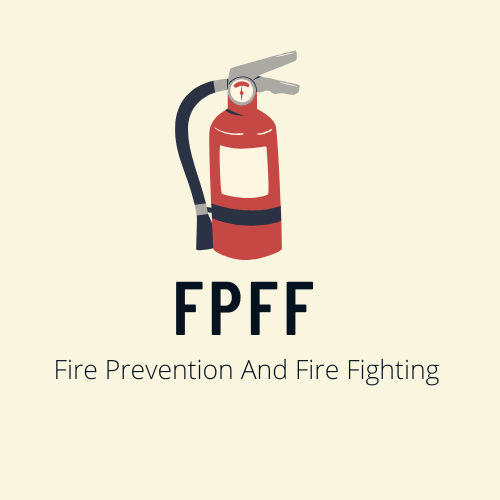LGTF exit exam questions and answer quiz contain questions Answer
If you find any questions incorrect, please let us know by Clicking here.
1. What does the pressurizing of insulation spaces with nitrogen and maintaining a slightly higher pressure than the atmospheric pressure prevent?
- Formation of explosive mixtures; ingress of moisture and air •
- Fall in cargo tank temperatures
- Collapse of the inflated insulation boxes
- Accidental formation of vacuum leading to membrane collapse
2. Onboard an LNG carrier, what is the maximum allowable filling limit as per the IMO /IGC regulation?
- 98.5%
- 98.6%
- 98% •
- 99.0%
3. What does the pressurizing of insulation spaces with nitrogen and maintaining a slightly higher pressure than the atmospheric pressure prevents?
Formation of explosive mixtures; ingress of moisture and air •
Fall in cargo tank temperatures
Collapse of the inflated insulation boxes
Accidental formation of vacuum leading to membrane collapse
4. Onboard an LNG carrier, what is the maximum allowable filling limit as per the IMO /IGC regulation?
98.5%
98.6%
98% •
5. What does the pressurizing of insulation spaces with nitrogen and maintaining a slightly higher pressure than the atmospheric pressure prevents?
Formation of explosive mixtures; ingress of moisture and air •
Fall in cargo tank temperatures
Collapse of the inflated insulation boxes
Accidental formation of vacuum leading to membrane collapse
6. What is the consequence of ice formation in a cargo tank?
Burst in the discharge line
Formation of cold spot in ballast tank
Possible damage to the cargo pump during discharge •
Icing - up of the discharge pump
7. A gas has to be cooled below Its critical temperature to be liquefied? Choose your comment.
False
True •
8. During the dilution method of gas replacement, where does the concentration of existing gas drop faster?
a. Tank outlet
b. It is uniform all over the tank
c. Tank bottom
d. Tank Inlet •
9. During heat transfer from one body to another, what transfer takes place?
Molecule
Power
Electron
Energy
10. What is the IGC code definition for a liquefied gas?
Product having a saturated vapor pressure of 2.8 bar absolute at 37.8°C/100 °F •
Product having a saturated vapor pressure of 1.76 bar absolute at 37.8°C/100 0 F
Products having a saturated vapor pressure of 1.76 bar absolute at 38.7°C/102 ° F
Product having a saturated vapor pressure of 2.8 bar absolute at 38.7°C/102 0 F
11. How can a gas be liquefied?
By mixing gases of higher specific density
By the application of pressure or by cooling •
By fusion in a closed chamber
By evaporation in a closed chamber
12. Why is LNG liquefied for sea transportation?
The ship can choose the form of natural gas or LNG to be loaded
It makes it more economical to transport •
Natural gas transportation by sea Is banned
LNG has a higher calorific value than natural gas thus increases revenue
13. Up to what temperature is methane vapor heavier than air?
-161.5°C
15° C
-121.5°C
-110.5°C •
14. In case of heating the mercury column containing the test liquid, the level of mercury will
a. Increase
b. Decrease
c. Remain same
15. Why Is LNG liquefied for sea transportation?
The ship can choose the form of natural gas or LNG to be loaded
It makes it more economical to transport •
Natural gas transportation by sea is banned.
LNG has a higher calorific value than natural gas thus increases revenue
16. Find the correct statement in monitoring a typical HSE Performance Indicator:
Lost time Injury frequency (LTIF) - the number of Incidents of injury resulting in lost time per 1 million man-hours worked
Total recorded case frequency (TRCF) - the number of recorded Incidents per 1 million man-hours worked
Both the LTIF and TRCF •
17. What are typical set point values for the insulation spaces' pressure relief valves?
200 mbar above atmospheric pressure
-200 mbar below atmospheric pressure
- 10 mbar above atmospheric pressure •
-10 mbar below atmospheric pressure
18. Why should we maintain a low cargo tank pressure during the inerting operation?
To reduce the consumption of inert gas
To allow inert gas to flow in faster into the tank
To reduce mixing of inert gas and air during displacement •
To prevent over pressurization of the cargo tanks and activation of cargo safeties
19. What is the limitation of a combustible gas detector of catalytic combustion type?
It cannot be used for measurement in air
It cannot be used for measurement in nitrogen •
It cannot be used for measurement in methane
It cannot be used for measurement in oxygen
20. Which of the following machinery is used for the initial pressurization of insulation spaces?
Boiler
Evaporator
Nitrogen generator ♦
Vacuum pump
21. How many portable multi-gas detectors should be carried on board?
At least one with methane gas and one with propane gas detection capability
At least one with methane and one with carbon monoxide gas detection capability
At least one with methane gas and one with ammonia gas detection capability
At least two sets with methane gas detection capability •
22. What is the type of gas detection system fitted to monitor gas content of the insulation spaces?
Continuous measurement system using catalytic combustion type
Infrared type / sequential measurement •
Portable gas detection system due to mobility of this method
Spot metering type fixed inside the individual insulation spaces
23. Which is the melting point temperature of the ESDS automatic fusible element normally fitted onboard?
Between 200°C to 206°C
Between 50°C to 55°C
Between 72°C to 78°C
Between 98°C to 104°C •
24. Under the pneumatic link system, what will happen when the ship moved off the jetty exceeds its safe working
limits (distances)
Hose - break
Air pressure - drop
Alarms sounded and ESD activated
Hose - break, Air pressure - drop, ESDS - Alarms sounded and ESD activated •
25. Which is the melting point temperature of the ESDS automatic fusible element normally fitted onboard?
Between 200°C to 206°C
Between 50°C to 55°C
Between 72°C to 78°C
Between 98°C to 104°C •
26. In ship's ESDS, an automatic electrical system which energizes ESDS due to temperature change of the sensor, fitted at each tank domes and both manifold platforms are known as
Automatic fusible elements •
Automatic push button
Infrared gas detection system
Automatic heat sensors
27. LNG vapors explode when it is mixed with air within the flammable range gas volume.
25-30%
5-15% •
40-50%
28. The stationery powder post should have a minimal capacity of.
3.5kg/second
2.5kg/second
15.kg/ second
29. What is the range of expansion ratio for high expansion foams?
1000:1 •
5:1 to 15:1
1250 liters/min
30. A glass bulb under the cap of the soda acid type- water extinguisher has a solution of
Dilute Hydrochloric Acid - HCI
Concentrated Sulfuric Acid- H2SC>4
Dilute Sulfuric Acid- H2SO4 •
Concentrated Hydrochloric Acid- HCI
31. RICE stands for
A staple food in India
Rest, ice, compression and elevation •
Research, investigation, complication and end result
Real international continuing education
32. Classification of burns and scalds include the following except:
First degree
Second degree
Third degree
Fourth degree •
33. Identify the correct statement from the following list, that describes the dangerous gases emitted from a sewage
tank correctly,
Methane and hydrogen sulfide •
Ethane and hydrogen
Methane and hydrogen peroxide
Methane and carbon-di-oxide





